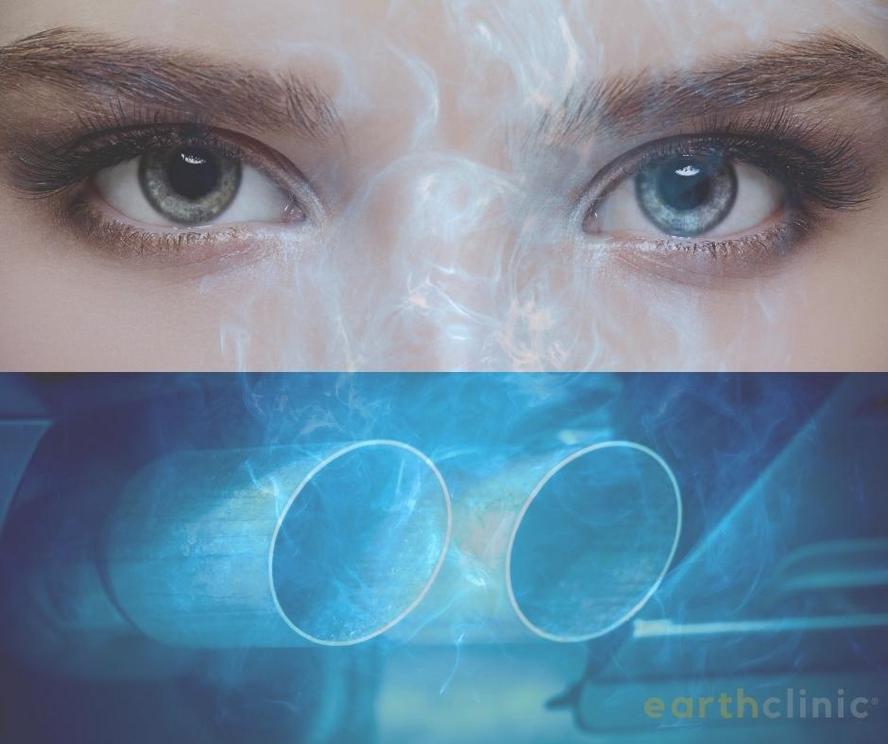How carbon monoxide from passing vehicles can shorten your life
Years ago, the famous health contributor, Ted from Bangkok, copied Earth Clinic on an email about an older man in India who had a stroke and fell into a coma after taking a walk. Ted replied to the relative who was writing to him seeking remedies for his father that carbon monoxide poisoning was an often under-reported cause of strokes and heart attacks, especially in areas with a lot of vehicular pollution.
Fifteen years later, I was reminded of Ted's email when I was raking leaves at the bottom of my driveway in early November.
Two delivery trucks drove up my street and parked nearby. They kept their engines idling while running the packages to myself and the neighbor across the street and then zoomed off. I kept raking leaves at the bottom of my hill, even though I could smell a lot of exhaust in the air.
Within a minute or two, I was very nauseous. After another few minutes, one of my temples began throbbing, and a dull headache quickly set in. Ten minutes later, I was suddenly exhausted and had to lie down.
Even though my dull frontal headache dissipated quickly, it took another 48 hours to feel "normal" again.
Remembering what Ted had written about outdoor carbon monoxide poisoning, I went online and started to research the subject.
I soon discovered that I had all the early onset symptoms of carbon monoxide poisoning; dull headache, nausea, extreme fatigue, and brain fog.
I subsequently set off on a multi-month journey to learn more about carbon monoxide poisoning and how to recover from it. Not the rare instance of CO poisoning from your furnace or idling car in the garage, which is what most articles focus on, but specifically carbon monoxide emissions from motor vehicles.
I quickly discovered that there is astoundingly very little research on the subject, even though carbon monoxide is a deadly gas. Let us never forget that the Nazis used carbon monoxide in two Concentration Camps during WWII.
Unfortunately, it appears that outdoor carbon monoxide poisoning is a deeply neglected consideration in medicine, which is very strange given the dire consequences of inhaling it, such as brain and heart damage from just one high concentration exposure.
This article explains what happens when carbon monoxide enters your bloodstream via your lungs or your eyes and the serious health issues that can arise from these frequent, unavoidable, outdoor carbon monoxide exposures.
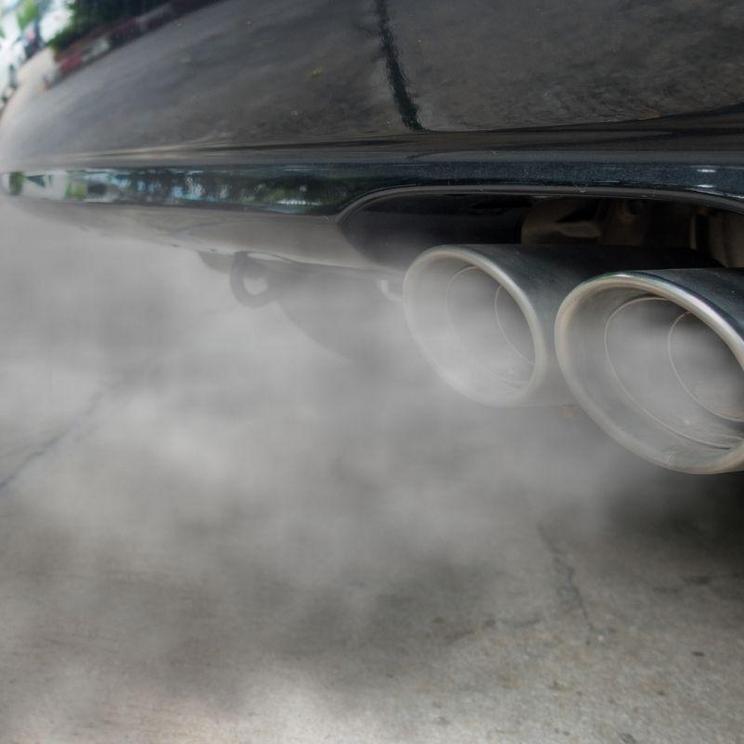
You could be outside jogging or walking from your car into a store and pass by an idling vehicle. You won't ever know if there was carbon monoxide coming from that vehicle's tailpipe, and if so, how concentrated it was. If it's an older car or if there is a leak in the exhaust system, carbon monoxide will be present.
Unfortunately, carbon monoxide poisoning symptoms can appear immediately, 15 minutes later, or even days later. This is precisely why people rarely put two and two together and realize that their symptoms might have been caused by that idling truck they walked past in the parking lot on a windless day.
Bodily damage from any amount of carbon monoxide exposure is cumulative and, over time, very harmful to your health.
What is Carbon Monoxide?
Carbon monoxide colorless, odorless, and tasteless gas created whenever fossil fuel is burned.
Carbon monoxide consists of one carbon atom and one oxygen atom, giving it the abbreviated name of CO.
Carbon monoxide is slightly lighter than air. Specifically, air typically has an average molar mass of 28.8, while carbon monoxide has a molar mass of 28.0, making it barely lighter than air.
It is known as the "silent killer" because people do not realize they have been affected by it until symptoms appear, sometimes hours or even days after exposure.
What is Carbon Monoxide Poisoning?
Carbon monoxide poisoning occurs when carbon monoxide builds up in your bloodstream.
Anyone is at risk for CO poisoning when exposed to high enough concentrations.
When you breathe in carbon monoxide from the air, your body replaces the oxygen in your red blood cells with carbon monoxide.
The tremendous danger with any amount of CO inhalation is that the hemoglobin in your blood is more than 200 times more attracted to carbon monoxide than oxygen. (1)
This means that your blood can quickly lose the ability to carry oxygen to the tissues in your body. CO poisoning can make any existing medical condition worse. It is especially dangerous to the sick, elderly, and children.
Why Even Small Amounts of Carbon Monoxide Are Bad for You
Carbon Monoxide binds with your hemoglobin (the protein in red blood cells that helps blood carry oxygen throughout the body) and becomes Carboxyhemoglobin (symbol COHb or HbCO). This is hemoglobin that has carbon monoxide bound to it instead of normal oxygen.
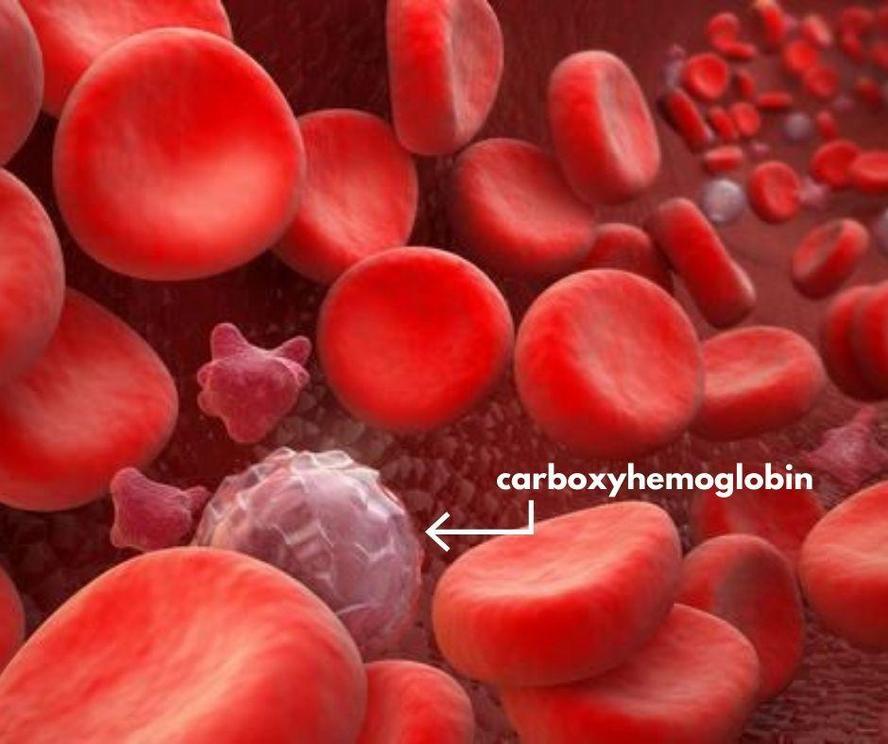
Your hemoglobin is what transports oxygen from your lungs to the rest of your body. It is what makes oxygenated blood-red in color. Once hemoglobin becomes carboxyhemoglobin after you inhale CO, it is unable to carry oxygen.
The higher the amount of carbon monoxide inhaled, the more carboxyhemoglobin in the blood. Not only does carboxyhemoglobin reduce oxygen availability to your tissues, but it also causes chemical asphyxia and hypoxia. (2) Instead of poisoning you as any other toxin would, carbon monoxide causes asphyxiation or oxygen deprivation to your organs.
Carbon monoxide also binds to other molecules in your body, such as NADPH reductase and cytochromes. Once bound to these molecules, carbon monoxide can disrupt normal physiologic processes, including mitochondrial dysfunction.
Carbon Monoxide can also affect your leukocytes, platelets, and endothelium, and induce oxidative injury. (3)
Toxicity Levels of CO
The extent of bodily damage from carbon monoxide depends on the concentration of the inhaled poisonous gas.
Carbon Monoxide concentrations as low as 667 ppm may cause up to 50% of the body's hemoglobin to convert to carboxyhemoglobin. A level of 50% carboxyhemoglobin may result in seizure, coma, and fatality. (4)
The parts of the body most affected by CO poisoning are those most susceptible to hypoxia (which is when your tissues are starved of oxygen).
Your brain and eyes are most at risk upon exposure to this gas due to these structures' enormous oxygen demands.
How Carbon Monoxide Exposure From Motor Vehicles is Bad For You
In 2011, 52% of carbon monoxide emissions were created by motor vehicles in the U.S., according to an EPA report published and since removed from its site. (5)
Alarmingly, tailpipe concentrations of carbon monoxide in older gasoline engines that don't have catalytic converters are usually 30,000 to over 100,000 ppm, depending on the engine's condition. (6)
One study from 1973 (before catalytic converters) found that a 90-minute ride on a Los Angeles freeway produced EKG irregularities in 40% of patients with pre-existing cardiovascular disease. Expressway CO levels were only 25-100 ppm.
How Does Carbon Monoxide From Vehicles Affect the Air We Breathe?
Even though the EPA emission standards have reduced the amount of carbon monoxide produced by over 95%, a single-vehicle emitting high carbon monoxide concentrations can leave a cloud of harmful carbon monoxide. (7)
Why Are Exhaust Systems So Dangerous?
Internal combustion gasoline engines produce extremely high carbon monoxide concentrations.
Even a properly tuned gasoline engine produces more than 30,000 parts per million (ppm) of CO in the exhaust stream before the catalytic converter. Any leak from the exhaust can allow carbon monoxide to escape before it is converted to non-toxic CO2 in the catalytic converter. (7)
Carbon Monoxide leaks from a tailpipe or exhaust system can enter another vehicle behind it through holes in the auto body, the ventilation system, or open windows.
Now, if you happen to be walking by a car or truck leaking a high concentration of carbon monoxide, you will quickly inhale a high concentration of carbon monoxide within one or two breaths.
Remember that it only takes concentrations as low as 667 ppm to cause up to 50% of the body's hemoglobin to convert to carboxyhemoglobin. This means that much lower concentrations can cause damage to the body.
The good news is that the catalytic converter found on newer cars and trucks combines oxygen with carbon monoxide to form non-poisonous carbon dioxide (CO2), reducing it to low concentrations.
The bad news is that even today, you will frequently encounter cars or trucks emitting dangerously high amounts of CO in their plumes.
Two Critical Questions
This leads us to two critical health questions:
1) What happens if you inhale, albeit briefly, a high concentration of carbon monoxide walking outside?
2) What happens when this extremely toxic gas gets in your eyes?
The short answer: it's not good.
Short-Term Exposure to Carbon Monoxide Poisoning
The main manifestations of carbon monoxide poisoning develop in the organ systems most dependent on oxygen use, such as the brain, heart, eyes, and the central nervous system. (8)
Carbon monoxide can cause symptoms even in small amounts. Symptoms can occur instantly or have a delayed onset. (9)
CO poisoning symptoms are frequently mistaken for a virus, like the flu, food poisoning, or gastroenteritis. Headaches are the most common symptom of short-term carbon monoxide poisoning, but there are many others. They include:
- Dull, Frontal Headache
- Immediate Fatigue
- Depression, Sudden Onset
- Tinnitus
- Brain Fog
- Weakness
- Dizziness
- Nausea
- Shortness of breath
- Confusion
- Arrhythmias
- Memory Issues
- Movement Problems
- Tinnitus
- Blurred vision
-1612698214741.jpg?w=992&h=744)
Less Common Symptoms of CO Poisoning
Less common symptoms of acute carbon monoxide poisoning include:
- myocardial ischemia
- atrial fibrillation
- pneumonia
- pulmonary edema
- high blood sugar
- lactic acidosis
- muscle necrosis
- acute kidney failure
- skin lesions
- visual and auditory problems (9) (10) (11) (12)
Complications
Depending on the amount of exposure, carbon monoxide poisoning can have serious complications, including:
- Brain damage, including strokes
- Damage to your heart, including heart attacks
- Fetal death or miscarriage
- Death
Carbon monoxide exposure may lead to a significantly shorter life span due to heart damage. (13)
Carbon Monoxide Tolerance Levels
Several factors affect carbon monoxide tolerance level for any person, including:
- Activity level rate of ventilation pre-existing cerebral issues
- Pre-existing cardiovascular disease
- Cardiac output
- Anemia
- Sickle cell disease and other hematological disorders,
- Barometric pressure
- Metabolic rate (14)
Delayed Neurological Complications from Carbon Monoxide Poisoning
One of the major concerns following carbon monoxide poisoning is the delayed neurological complications that can occur anywhere from 2 to 40 days after exposure to Carbon Monoxide.
Problems may include the following:
- Short-term memory loss
- Dementia
- Amnesia
- Psychosis
- Irritability
- Strange Gait
- Speech Disturbances
- Parkinson's Disease-like Syndromes
- Cortical Blindness
- Depression in those who did not have pre-existing depression (15)
Advanced age and initial neurological abnormalities may increase the chance of developing delayed symptoms. (16)
How Do I Heal From Symptoms of Carbon Monoxide Poisoning?
The time it will take to recover from carbon monoxide poisoning entirely depends on the amount of carbon monoxide gas inhaled.
The half-life of carbon monoxide without using oxygen is 320 minutes—more than five hours to reduce levels by half. This means that if you breathe fresh air, it will take five hours to get half the carbon monoxide out of your system. It will take another five hours to cut that level in half and so on.
Suppose there is just one instance of high ppm carbon monoxide gas inhalation from a passing car, for example. In that case, symptoms may resolve anywhere from a few hours to a week of inhalation as long as you are not subjected to further incidences of CO poisoning. (18)
High-level carbon monoxide poisoning is often treated with high-flow oxygen for as long as it takes to replace the carbon monoxide attached to hemoglobin with oxygen. Severe carbon monoxide poisoning requires time in a hyperbaric oxygen chamber.
Warning: Paint and Varnish Solvents Can Also Create Carbon Monoxide
Methylene chloride, a solvent commonly found in paint and varnish removers, can break down into carbon monoxide when inhaled. Exposure to methylene chloride can cause carbon monoxide poisoning.
Always use caution when working with paint solvents indoors—open windows. (19)
How Can I Protect Myself From Vehicular Carbon Monoxide Poisoning?
- Move out of the area of any idling car, truck, or boat if you start to feel light-headed or nauseous.
- Wear protective eye wear.
What Can I Do to Clear My Body from CO Poisoning?
It takes very little carbon monoxide in the air you breathe to get CO poisoning. Unfortunately, it takes a lot of oxygen to get rid of it, which is the traditional CO poisoning treatment.
Hyperbaric Oxygen Chamber
For severe cases of CO poisoning, oxygen is administered in a hyperbaric chamber. This is a tube where the patient lies in and breathes 100% oxygen at high pressure. Using a hyperbaric oxygen chamber, you can reduce the elimination half-life of carbon monoxide to about 20 minutes. (20)
Hydrogen-Rich Saline Solutions
Another treatment that has been frequently studied in animals for acute CO poisoning is hydrogen-rich saline. The saline is an antioxidant, non-toxic, convenient, and safe to use. It is commonly used in Japan for metabolic disorders. (21)
Natural Remedies for Carbon Monoxide Poisoning
Because hyperbaric oxygen therapy is only available in severe carbon monoxide poisoning cases, it is an excellent idea to know your options for a suspected short term but high concentration events outdoors.
Supplemental Oxygen Can
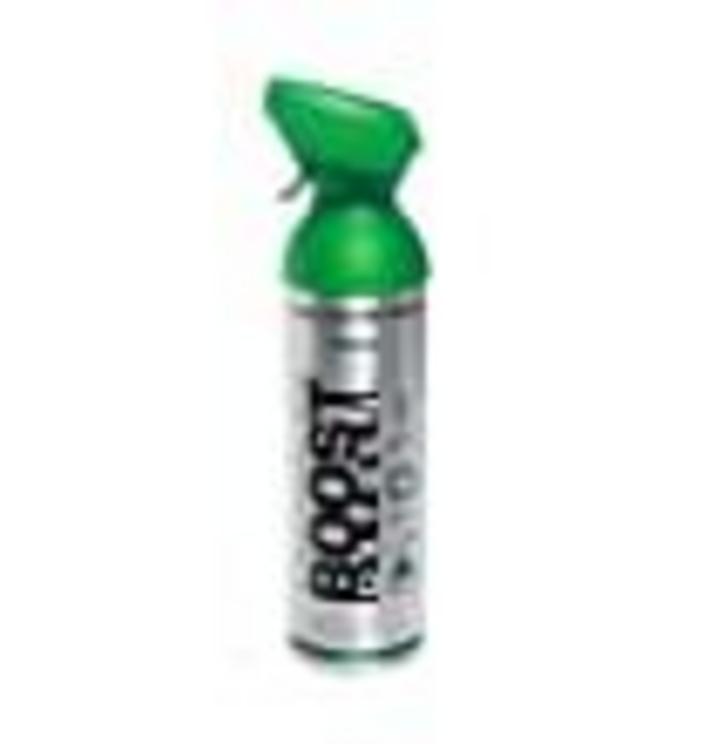
Shirley M. from Sedona made a fantastic suggestion to keep supplemental oxygen called Boost O2 in your home and car, as you will read in the feedback section below.
Read about Boost O2 on Amazon here.
Antioxidants
Take antioxidants to control the potential damage from carbon monoxide poisoning. Three of the most potent antioxidants are:
- Astaxanthin
- Vitamin E
- Vitamin C
Home Remedies
Any supplement or natural remedy traditionally used for stroke and heart disease prevention might be helpful if carbon monoxide poisoning from short term exposure is suspected.
These remedies include:
- Cayenne Pepper
- Nattokinase
- Baby Aspirin
- Hydrogen Peroxide Inhalation or Therapy
Take upon first sign of CO poisoning.
How Fast Does Carbon Monoxide From Vehicles Dissipate in the Air Outside?
How quickly carbon monoxide dissipates outside depends on how much wind there is.
On a windless day, a blast of high ppm (parts per million) carbon monoxide from a tailpipe can hover in the area for more than just a few seconds.
Dangerous levels of carbon monoxide can accumulate anywhere near an idling motor vehicle or boat.
Can I Get Carbon Monoxide Poisoning Through My Eyes?
Yes. The brain and eyes are most at risk upon exposure to this gas due to these structures' enormous oxygen demands. (22)
How Do I Protect My Eyes from the Effects of Carbon Monoxide Gas?
Simple. Wear protective eye gear such as sunglasses or glasses when you are outside.
When to Seek Medical Help
Call 911, move to a source of fresh air and seek prompt medical help if you suspect severe CO poisoning, are feeling dizzy, light-headed, weak, or nauseated.
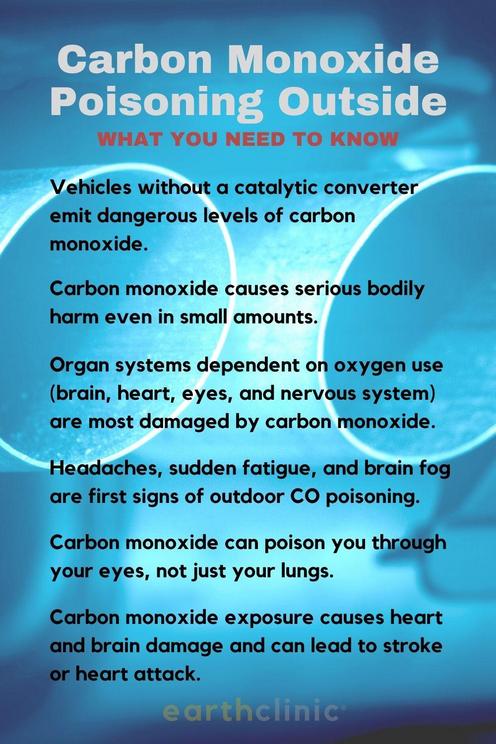
Summary
- Most cars today have a catalytic converter, which transforms carbon monoxide into harmless carbon dioxide before it comes out of the tailpipe. The problem is with older cars that do not have these converters or vehicles with their exhaust systems.
- When there is any carbon monoxide in the air you're breathing, your body replaces the oxygen in your red blood cells with it.
- It only takes carbon monoxide concentrations as low as 667 ppm to cause up to 50% of the body's hemoglobin to convert to carboxyhemoglobin. This means that much lower concentrations of CO can cause damage to the body.
- Carbon Monoxide poisoning effects are cumulative.
- Repeated carbon monoxide exposure of any level and concentration can lead to serious health issues and even death.
- Besides your lungs, the eyes are also entry points for this toxic gas and should be protected with eye gear. This is especially true for the sick or elderly.
- Keep elderly and sick people away from idling vehicles and boats.
- Carbon Monoxide poisoning symptoms can appear immediately or have a delayed onset, making it difficult to diagnose as the cause.
Cayenne
Posted by Jill (Toronto) on 01/20/2021
1 teaspoon of cayenne powder in a small amount of juice or water for suspected CO poisoning. Don't forget to give it to your pets if you suspect they also got a nasty hit of carbon monoxide outside. I noticed one of my dogs sometimes gets agitated for no apparent reason after we come back from a long walk. Maybe that's the reason.

